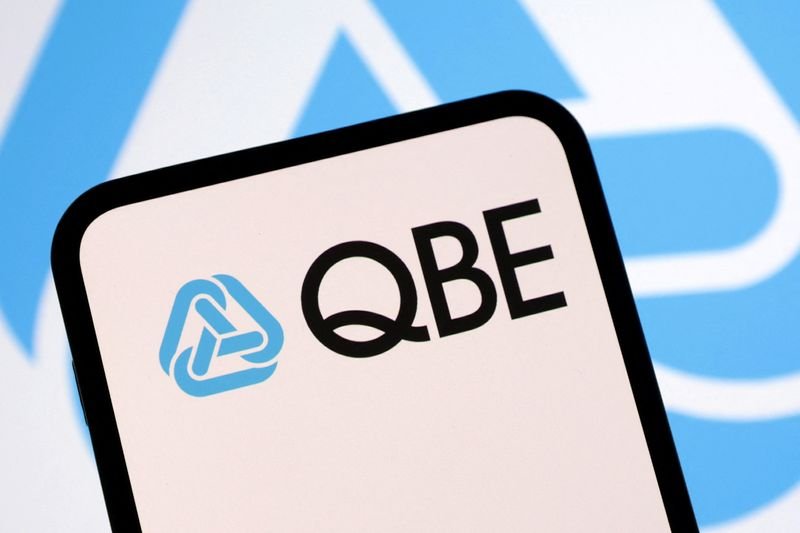Australian Insurer QBE Surpasses Interim Profit Expectations Amid Premium Growth and Reduced Claims
Australian insurance provider QBE has reported impressive interim profit figures, surpassing analysts’ predictions. This growth can be attributed to a notable increase in insurance premiums and a decrease in claims made by policyholders.
Premium Growth Fuels Financial Performance
QBE’s financial performance has seen significant boosts thanks to robust premium growth across various sectors. The company has managed to attract a larger customer base while also increasing the rates on existing policies. This strategy has allowed QBE to enhance its policy offerings and strengthen its market position, resulting in heightened revenue.
The insurance industry in Australia has been experiencing a competitive landscape, prompting companies to adapt and refine their pricing strategies. QBE’s focus has been on tailoring products to meet the evolving needs of customers, ensuring a balanced approach to risk and profitability.
Effective Claims Management
In addition to premium increases, QBE has benefited from a reduction in claims, which has positively impacted its overall profitability. The company has implemented effective claims management practices, leading to fewer payouts. This trend reflects QBE’s commitment to risk assessment and providing superior customer service.
By investing in technology and data analytics, QBE has managed to streamline its claims processing. This not only speeds up claim resolutions but also reduces operational costs, ensuring that resources are allocated efficiently. The reduced number of claims reflects the effectiveness of these strategies, enhancing QBE’s competitive edge in the market.
Strategic Focus on Core Markets
QBE has maintained a strategic focus on its core markets, primarily in Australia and New Zealand, while also expanding its footprint in international territories. This dual approach allows the company to leverage local expertise while also diversifying its portfolio globally. By doing so, QBE aims to mitigate risks associated with economic fluctuations in individual markets.
The insurer has emphasized the importance of local knowledge in its international operations. This commitment ensures that QBE understands the regulatory environments and customer preferences in various regions, enabling it to craft products that resonate well with local customers.
Investment in Technology and Innovation
Another significant contributor to QBE’s success is its investment in technology and innovation. The insurance landscape is continually evolving, and QBE recognizes the importance of adapting to these changes. By embracing digital transformation, QBE enhances its operational efficiencies and customer engagement.
The integration of artificial intelligence and machine learning into its operations has allowed QBE to analyze large sets of data more effectively. This capability has not only improved underwriting processes but also enhanced fraud detection measures. As the company continues to innovate, it has positioned itself as a forward-thinking insurer ready to meet the challenges of the digital age.
Diversified Product Offerings
QBE’s diverse range of insurance products has also played a crucial role in its financial success. By offering various services, including property, casualty, and specialty insurance, the company is well-equipped to meet the diverse needs of customers. This diversity minimizes reliance on any single revenue stream, contributing to the overall stability and resilience of the company.
As market demands evolve, QBE continues to innovate its product offerings, ensuring that they remain aligned with customer expectations. This proactive approach has been paramount in securing customer loyalty and enhancing QBE’s reputation as a trusted insurer.
Strengthening Market Confidence
The latest financial results have instilled confidence among investors and stakeholders alike. Analysts have noted that QBE’s strong performance reflects not only effective management strategies but also a commitment to maintaining transparency and accountability. As a publicly traded company, QBE understands the importance of building trust with its investors, and its recent results reinforce its position in the market.
By consistently exceeding profit expectations, QBE has positioned itself favorably for future growth. The company’s focus on financial discipline, coupled with its strategic initiatives, demonstrates a strong foundation for ongoing success.
Navigating Challenges in the Insurance Sector
Despite the positive results, QBE recognizes that challenges are inherent in the insurance sector. Factors such as changing regulatory landscapes, evolving customer expectations, and emerging risks must be continuously navigated. QBE is committed to remaining agile and responsive, ensuring that it can adapt its strategies to address these challenges head-on.
Moreover, external factors such as climate change and economic fluctuations are also evaluated regularly. QBE’s approach to risk management includes analyzing these external elements, which enables it to make informed decisions that safeguard its financial health and operational stability.
Commitment to Sustainable Practices
In addition to its financial success, QBE is dedicated to sustainability and corporate social responsibility. The company recognizes its role in promoting environmentally friendly practices within the insurance industry. QBE has initiated various projects aimed at reducing its carbon footprint while also encouraging clients to engage in sustainable practices.
By prioritizing sustainability, QBE not only enhances its brand image but also aligns with growing consumer preferences for environmentally responsible businesses. This commitment is increasingly becoming a key differentiator in the competitive insurance market, further solidifying QBE’s position as a leader in the industry.
Conclusion
These financial achievements, coupled with a strategic focus on growth and innovation, foreshadow a promising future for QBE. As the company continues to adapt to industry changes and client needs, it is likely to maintain its upward trajectory in the dynamic landscape of the insurance sector.
